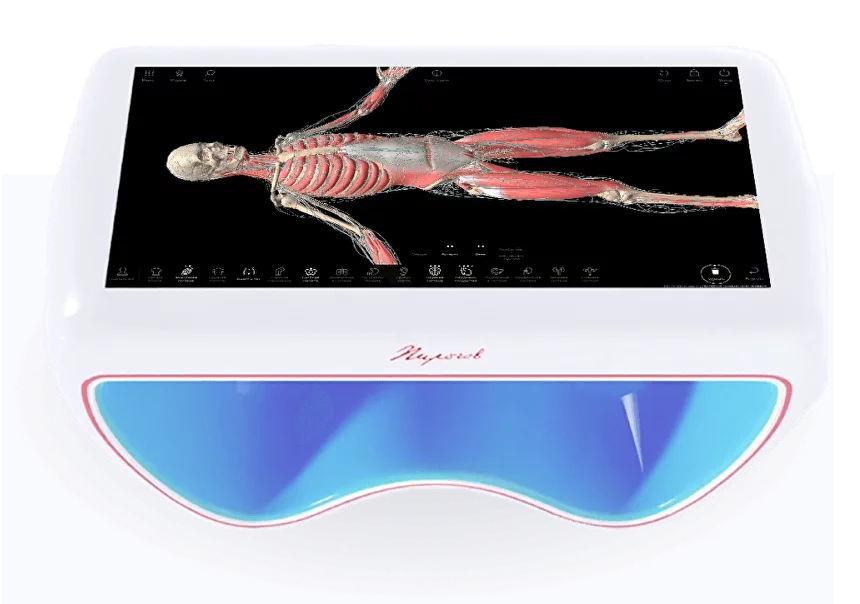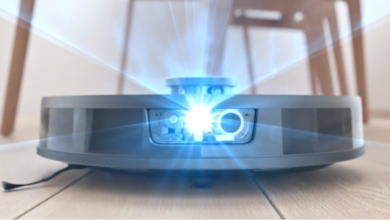
Virtual Anatomy Dissection Table: Modern Technologies in Medicine

Studying anatomy on a screen with the ability to change the body’s position, make cuts and sections in all possible planes and directions, simulate the course of surgical operations and pathological dissections – these and other opportunities for education are provided by the new anatomical table “Pirogov Virtual Dissection Table“
The anatomical table is the latest invention that enhances the quality of education and helps students better understand human anatomy. On the screen of the new device, a person with all anatomical features is displayed. Muscles, circulatory system, nervous endings, organs – are viewed in detail due to high-quality images.
The anatomical table offers wide-ranging educational opportunities. It enhances the quality of students’ knowledge. From the first year of study, students will begin to correctly perceive anatomy and form knowledge about the connection of theoretical information with clinical practice. This is invaluable and cannot be assessed monetarily.

Just 15 years ago, students had atlases, tables, and specimens at their disposal. Now they examine every detail of the human body in any projection and scale. The image database is extensive and can be supplemented.
This does not replace dissection. Education continues according to the traditional system; the new equipment complements and improves it.
Students of junior courses will be the first to see the table in action. Already, they are amazed at how natural the organs and tissues look. This is because the device contains real, scanned bodies of people who bequeathed themselves to science. Now students observe a complete real 3D model of the human body.
Another advantage is the ability to see the body or organ in any section and projection, track the location of organs relative to each other, and layer by layer remove or add tissues.
About Pirogov Virtual Dissection Table

It is a hardware and software complex consisting of a plasma panel (Full HD/4K) with an integrated personal computer, integrated into a vandal-resistant housing made of composite materials, with LED backlighting of the internal part, which includes:
modern software developed by a Russian team of doctors and developers using 3D modeling technology of anatomical objects; detailed anatomical atlas of three-dimensional models of the male and female body with characteristic annotations of all anatomical structures typical for normal human anatomy; advanced interactive equipment for anatomy education with touch control and multimedia transmission of educational information. The interactive anatomical table “Pirogov” is developed taking into account the Russian system of training future medical professionals. It allows combining group and individual forms of the educational process, correlating educational materials with future professional activities, and modeling anatomical scenes.
Training using the interactive anatomical table “Pirogov” is most effective in combination with practical classes on anatomical biological material. It allows for repeated virtual dissection, training of students and residents in disciplines of normal, topographic anatomy and operative surgery, pathological anatomy, and forensic examination.
The teacher has the ability to independently upload new images and text files from the updating database of anatomical objects into the system, and place their own comments on the images. The presence of USB ports enables the demonstration of images in the classroom to over 100 people when multimedia projectors are connected.
The interactive anatomical table “Pirogov” allows for training in four modes, including control of the assimilation of educational material and residual knowledge of trainees.
Operating modes
Viewing Mode
In this mode, realistic 3D models of the male and female body are available in life-size, as well as the lobular and segmental structure of over 4000 human body objects, internal organ structures, and ligament apparatus. Anatomy can be studied by the systems of the human body layer by layer or by body parts. Sequential “dissection” of the entire body and its parts or performing anatomical sections in 3 planes is possible.
Anatomical objects are labeled in the selected language, with the ability to replace all interface texts and objects (Russian, English, Latin) with detailed textual descriptions. The lobular and segmental structure of over 4000 human body objects, internal organ structures, and ligament apparatus are presented. In “X-ray” mode, the nervous, lymphatic systems, and vessels of internal organs are presented.
Segmentation Mode
In this mode, the ability to highlight parts and segments of an organ is implemented. The following functions are provided for ease of use:
- “Search” – allows finding and highlighting the required object on the anatomical scene.
- “Highlight” – hides all 3D objects except the one you plan to work with.
- “Merge organs” – used when studying groups of objects.
Comparison Mode
In this mode, it is possible to compare various anatomical objects with each other. The table’s memory stores over 100 socially significant and common pathologies. It is possible to compare organs in normal and pathological conditions, and then immediately view original histological slide images.
Diagnostic Mode
In this mode, it is possible to get an idea of the basic methods of functional diagnostics. The interactive table “Pirogov” has an extensive database (over 4 GB) of diagnostic data (ultrasound, MRI, CT), allowing working with all the tools that bring the specialist closer to an accurate diagnosis. And the ability to compare diagnostic data in 2D with 3D body models maximally approximates the process to the real conditions of a medical professional’s work.
The software of the anatomical table allows for taking tests in training and control modes. The option to select loaded texts by topics of the “Topographic Anatomy” course, recommended for the certification of students by the First Sechenov Moscow State Medical University, or creating questions by course topics, is implemented. “Knowledge Check” allows assigning testing in learning mode with hints of correct answers and in control mode with a time limit.
